NASA revealed the first studies of the planet's outer atmosphere
NASA revealed the first studies of the atmosphere of seven Earth-like planets , the area where life exists . Invite you to consult!
NASA's Spitzer Space Telescope has revealed the first system known as 7 Earth-sized planets orbiting a single star. Three of the planets are located in the area where life can exist, orbiting the host star - a rocky planet capable of containing water in liquid form.
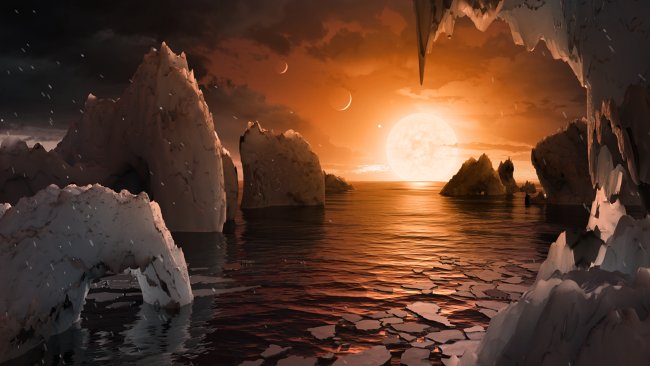 This is a surface simulation image of Trappist-1f, one of the newly discovered planets in the Trappist-1 star system.Scientists used Spitzer space telescopes and ground-based telescopes to detect seven planets of the same size and mass as Earth in the stellar system TRAPPIST-1.Photo source: NASA / JPL-Caltech
This is a surface simulation image of Trappist-1f, one of the newly discovered planets in the Trappist-1 star system.Scientists used Spitzer space telescopes and ground-based telescopes to detect seven planets of the same size and mass as Earth in the stellar system TRAPPIST-1.Photo source: NASA / JPL-Caltech
The discovery sets a new record for the large number of life-capable planets found around a star outside the solar system. All seven planets have liquid water - an important factor in survival - based on suitable atmospheric conditions, but the highest chance can happen is only 3 in 7 planets. may be the area where life exists.
" This discovery is an important piece of the question of finding a possible habitable environment, which allows life to exist. Answering the question 'Only their planet Earth can we survive life? ' It is a top priority in science and the search for multiple planets, like the first time, finding the area of life survival is an important step towards that goal, "Thomas Zurbuchen, Management at NASA's Mission Science Department - Science Mission Directorate in Washington.
Seven planets roughly the same size as Earth were observed with NASA's Spitzer space telescope as it orbited a cold dwarf star called Trappist-1.Three of the seven planets are claimed to be areas of life.Source: NASA
Located about 40 light-years from our planet Earth ( 235 trillion miles ), these planetary systems are relatively close to us, in the constellation Aquarius. Because their positions are outside the solar system, these planets are known as extrasolar planets.
This exoplanet system is called the Trappist-1 , named after the Small Telescope Planetary and Planetary Transit Survey ( TRAnsiting Planets and PlanetesImals Small Telescope - TRAPPIST ) - an observation device of La Silla Observatory is located in Chile. In May 2016, researchers used TRAPPIST glasses to announce that they discovered 3 planets in the system. Supported by many terrestrial telescopes, including the Southern Europe Observatory's huge telescope, Spitzer confirmed the existence of two of these planets and discovered five more another planet, increasing the number of known planets in this system to 7.
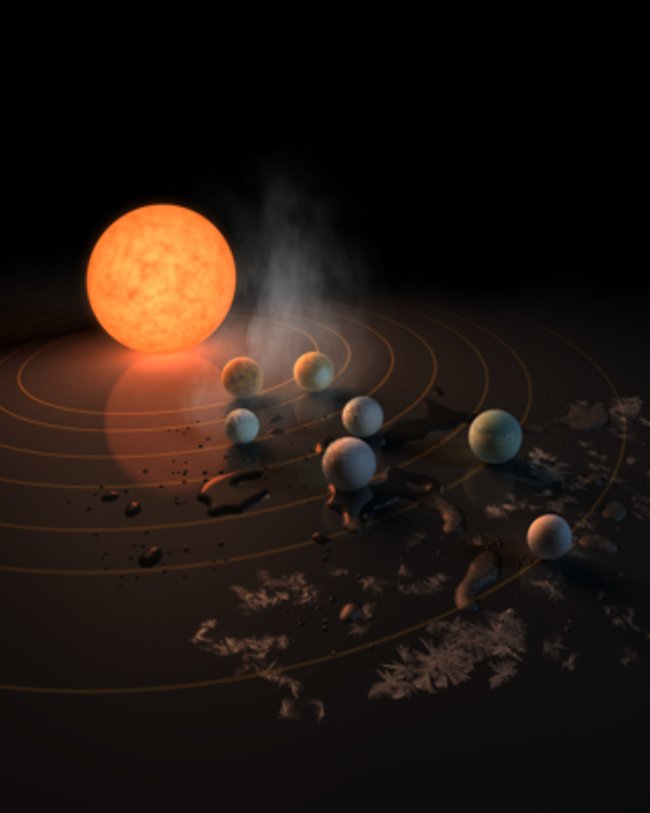 The star Trappist-1, a cold dwarf with seven Earth-sized planets orbiting it.This simulation image was published in Nature on February 23, 2017. Photo source: NASA / JPL-Caltech
The star Trappist-1, a cold dwarf with seven Earth-sized planets orbiting it.This simulation image was published in Nature on February 23, 2017. Photo source: NASA / JPL-Caltech
The new results are published Wednesday in Nature, and published at a press conference at NASA headquarters, Washington. Using Spitzer data, the team accurately measured the dimensions of seven planets and developed the first estimates of the weights of six planets, allowing an estimate of their density.
Based on their density, all Trappist-1 planets are likely to be rocky planets. Besides, other observations not only help determine whether the planets can contain water, but can also reveal exactly whether water can exist in liquid form on the surface or not. . The weight of the seventh planet and also the furthest planet yet to be estimated - scientists believe that this 7th planet could be a frozen planet, the " snowball-like " planet but need to observe more.
"The seven planets in the Trappist-1 star system are the first Earth-sized planets found around this type of star. It is also the best target for studying the atmosphere where possible. There is life, planets about the size of Earth , "said Michael Gillon, lead author of the extraterrestrial article and researcher TRAPPIST of Liege University in Belgium.
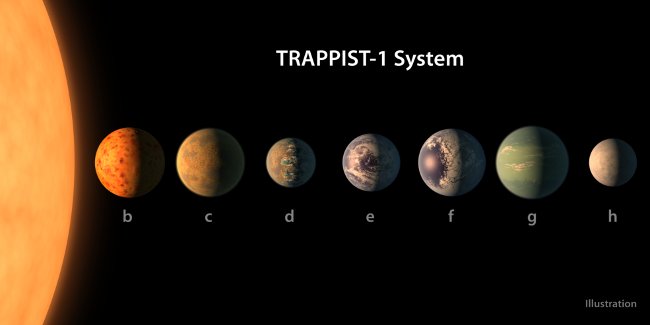 This is a picture of 7 planets in the star system TRAPPIST -1.Photo source: NASA / JPL-Caltech
This is a picture of 7 planets in the star system TRAPPIST -1.Photo source: NASA / JPL-Caltech
Unlike the Sun, star TRAPPIST-1 - known as a " cool " dwarf star - that liquid water can exist on planets orbiting it, moreover is possible. on planets in the solar system. All 7 planets in the planet Trappist-1 are closer to the star than the distance between Mercury and the Sun. The planets in the star system are also closer together. If a person stands on one of the seven planetary surfaces, they can look up and are more likely to see the geographical features or clouds of the nearby planet, which will sometimes appear larger than the Moon above. Earth sky.
The planets may also be " locked by the tide " with their stars, meaning that on the same side of the planet is always facing stars, so each face can be permanent or night. This means that they have a completely different type of weather than the weather on Earth, as strong winds blow on the surface of the day and night, and extreme changes in temperature.
Spitzer, an infrared telescope that follows the Earth as it orbits the Sun, is suitable for studying TRAPPIST-1 because stars will become the brightest in infrared light, with long wavelengths. more so the eye can be observed. In the fall of 2016, Spitzer observed TRAPPIST-1 continuously for nearly 500 hours. Spitzer was placed in a separate orbital position to observe the movements - movements of planets before the master star revealed the complex structures in the system. Engineers optimize Spitzer's ability to observe Spitzer's transparent " warm mission " planets, beginning to cool after the spacecraft deviates from its five-year plan. Firstly.
" This is the most interesting result I've seen in 14 years of Spitzer operations. Spitzer will follow in the fall to learn more about these planets so that the James Webb space telescope can continue to follow. Many observations of the system will certainly reveal to us more secrets , "said Sean Carey, manager at NASA's Spitzer Science Center at Caltech / IPAC in Pasadena, California.
Tracking Spitzer findings, NASA's Hubble Space Telescope has begun screening four of the seven planets, including three planets that may exist. These observations are aimed at assessing the presence of dominant hydrogen atmosphere, typically Neptune and the surrounding planets.
Panoramic video of the newly discovered planetary surface, Trappist 1-d, one of seven light-years from our Earth 40 years.Source: NASA
In May 2016, Hubble's team looked at the two planets in the inside and found no evidence of such an atmosphere. This shows that the case is the closest planet to the rock star in nature.
" The Trappist-1 star system offers one of the best opportunities in the next decade to study the atmosphere around Earth-like planets ," Nikole Lewis, co-leader of Hubble studies and home. Astronomy at the Space Telescope Science Institute in Baltimore, Maryland. NASA's Kepler space telescope searching for extraterrestrial life is also studying the star system TRAPPIST-1, making measurements of very small changes in light caused by the movement of planets. Acting as a K2 mission, spacecraft observations allow astronomers to learn more about the characteristics of known planets, as well as search for planets outside the system. K2 observations will end in early March and then available on public storage.
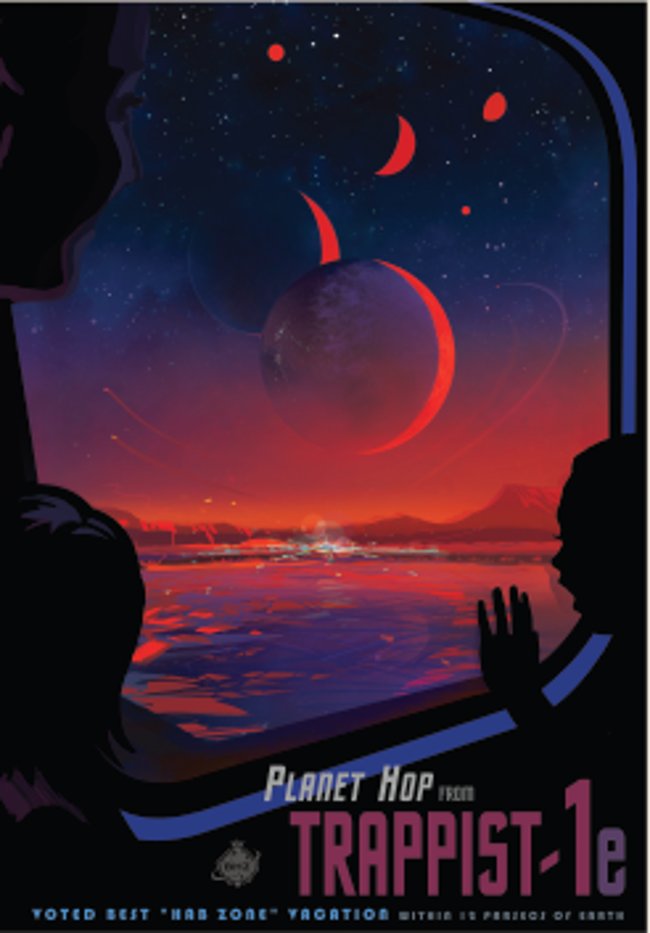 Imagination of what will happen during the trip to Trappist-1e.Photo source: NASA / JPL-Caltech
Imagination of what will happen during the trip to Trappist-1e.Photo source: NASA / JPL-Caltech
Spitzer, Hubble and Kepler space telescopes will help astronomers plan for further studies using NASA Space's upcoming James Webb telescope, which was launched in 2018. With sensitivity much larger, the James Webb telescope can detect chemical traces of water, methane, oxygen, ozone and other components in a planet's atmosphere. In addition, James Webb telescope also analyzes planetary temperatures and surface pressures - an important factor in assessing the viability of life.
NASA's Jet Propulsion Laboratory (JPL ) in Pasadena, California, manages Spitzer space telescope missions for NASA's Mission Science Mission. Scientific activities are conducted at the Spitzer Science Center, at Caltech, Pasadena, California. Spacecraft operations are located at Lockheed Martin Aeronautics Company ( Lockheed Martin Aeronautics Company ), Littleton, Colorado. Data is stored at the Department of Infrared Archive Science located at Caltech / IPAC. Caltech manages JPL for NASA.
Refer to some more articles:
- Photos of 7 planets may exist in the Trappist-1 star system
- How long does it take to get up to 7 life-capable planets - has Trappist-1 been discovered?
- How far is the distance from Earth to Mercury?
Having fun!
You should read it
- 5 interesting facts about TRAPPIST-1, solar system version 2.0
- How long does it take to get up to 7 life-capable planets - has Trappist-1 been discovered?
- Discovered evidence that 'Solar System 2.0' has water
- Maybe the Solar System 2.0 is not the 'cradle of nurturing life' as NASA hopes
- If people 'occupy' the Sun 2.0 system, how different is life there from Earth?
- Cosmic Science: The star system TRAPPIST-1 does not 'exist' the big Moon
- Top 5 planets may be our 'new houses' in the future
- If 'stray' to any planet in the solar system, what is your chance of survival?
May be interested
- Clip NASA: 'Glass lake' in the most terrible place in the solar system
 nasa has just revealed incredible images from the juno spacecraft's close flight to 'hellfire' io.
nasa has just revealed incredible images from the juno spacecraft's close flight to 'hellfire' io. - NASA announced concussion: 7 Earth-sized planets could have life
 nasa has just announced the discovery of 7 planets of the same size and mass as the earth and together in a single star system - the trappist-1 star system 40 years away from us is probably the environment for live can exist.
nasa has just announced the discovery of 7 planets of the same size and mass as the earth and together in a single star system - the trappist-1 star system 40 years away from us is probably the environment for live can exist. - If people 'occupy' the Sun 2.0 system, how different is life there from Earth?
 scientists at nasa have discovered 7 planets in the solar system 2.0 - trappist-1 is about the same size as the earth and is located in a region that can sustain life. assuming these planets can really sustain life, what will life on it be like?
scientists at nasa have discovered 7 planets in the solar system 2.0 - trappist-1 is about the same size as the earth and is located in a region that can sustain life. assuming these planets can really sustain life, what will life on it be like? - What are the requirements for becoming an NASA astronaut?
 nasa is stepping up the search for potential candidates for a young, enthusiastic new generation of astronauts ready to take part in missions to send humans to the moon, mars and possibly distant planets. more.
nasa is stepping up the search for potential candidates for a young, enthusiastic new generation of astronauts ready to take part in missions to send humans to the moon, mars and possibly distant planets. more. - Police protect the planet: Light pay high, stable to doomsday, receive 200,000 USD / year from NASA
 the work of the planetary guard helps to ensure that biological leaks do not occur on earth and in outer space.
the work of the planetary guard helps to ensure that biological leaks do not occur on earth and in outer space. - NASA's top secret inventions have just been revealed
 recently, nasa has published many videos of tests of its top secret inventions to the public. those are the unsuccessful and 'weird' inventions that have always been kept secret by nasa.
recently, nasa has published many videos of tests of its top secret inventions to the public. those are the unsuccessful and 'weird' inventions that have always been kept secret by nasa. - Is the 9th planet in the solar system 10 times the size of Earth?
 planets are considerably smaller than the stars found in the universe, but they do have some fascinating and unique features such as textures, atmospheres, elements present, rings, etc. here are lesser known facts about planets.
planets are considerably smaller than the stars found in the universe, but they do have some fascinating and unique features such as textures, atmospheres, elements present, rings, etc. here are lesser known facts about planets. - Do you know how tall it is?
 we all know that the sky is vast and vast and the destination is that people still have the effort to conquer. but how many people can answer the question of what exactly the sky is and how tall is it?
we all know that the sky is vast and vast and the destination is that people still have the effort to conquer. but how many people can answer the question of what exactly the sky is and how tall is it? - NASA broadcast live the event of the self-destructive Cassini probe on Saturn at 1732 this afternoon, we can see
 the cassini probe of the us aeronautics agency (nasa) will crash into 'suicide' saturn's atmosphere and explode at 17h32 on september 15. we can watch it live on youtube.
the cassini probe of the us aeronautics agency (nasa) will crash into 'suicide' saturn's atmosphere and explode at 17h32 on september 15. we can watch it live on youtube. - The sky is literally falling?
 recently, scientists from the us aeronautics and space administration (nasa) discovered a new effect of greenhouse gas emissions, which is the cooling of the highest layer of the atmosphere.
recently, scientists from the us aeronautics and space administration (nasa) discovered a new effect of greenhouse gas emissions, which is the cooling of the highest layer of the atmosphere.
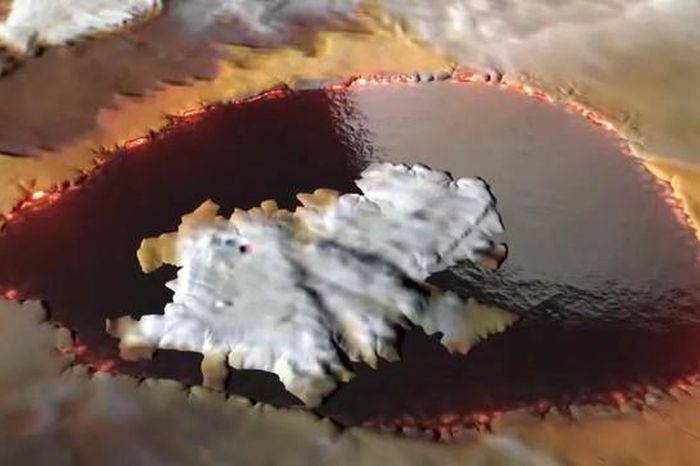









 The UAE plans to build a city on Mars
The UAE plans to build a city on Mars 10 interesting facts about black holes in the universe (Part 1)
10 interesting facts about black holes in the universe (Part 1) 10 interesting facts about black holes in the universe (Part 2)
10 interesting facts about black holes in the universe (Part 2) Future prospects when people own the solar system
Future prospects when people own the solar system The 7 largest objects people ever launched into space
The 7 largest objects people ever launched into space